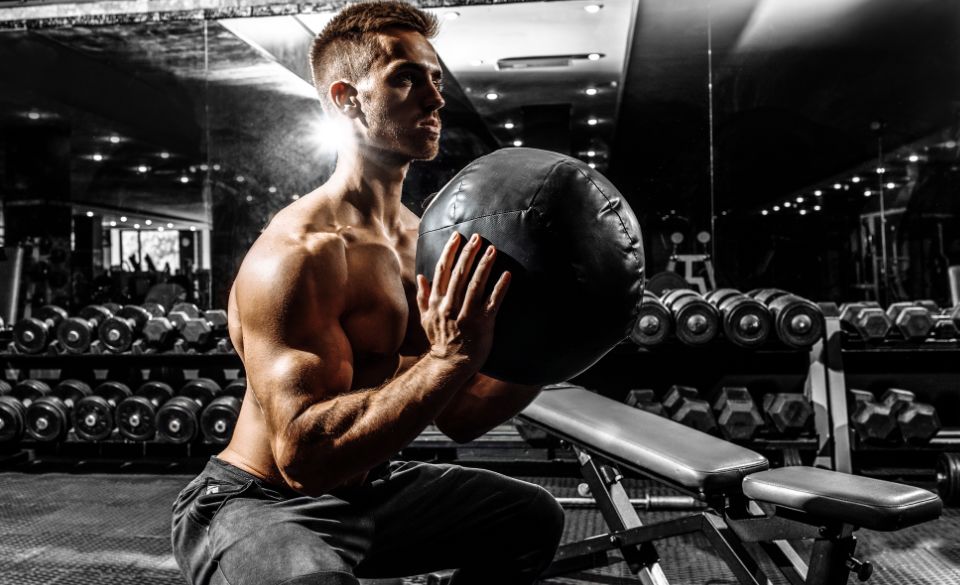
D-Ball Squats: A Powerful Exercise for Total Body Strength
Page Contents
Are you looking for a full-body exercise that can help you build strength and power? Look no further than D-ball squats. This intense exercise targets multiple muscle groups in the body, helping to build strength, endurance, and explosiveness. In this article, we’ll explore what D-ball squats are, how to perform them correctly, the muscles they work, and the benefits they offer.
What Is A D-ball Squat?
A D-ball squat is a type of resistance exercise that involves using a weighted ball, called a D-ball, to perform squats. The D-ball is a versatile training tool that can be used for a variety of exercises, including squats, lunges, and overhead presses.
During a D-ball squat, the weight of the ball adds resistance to the movement, which challenges the muscles in the lower body, core, and upper body. This exercise is ideal for anyone looking to build strength, increase muscle mass, or improve athletic performance.
D-ball squats are similar to traditional barbell squats, but they offer a few unique benefits. For one, using a D-ball allows for greater range of motion, as the ball can be held in different positions depending on the exercise being performed. Additionally, the unstable nature of the ball forces the body to engage more stabilizer muscles, which can lead to greater overall strength and stability.
This exercise is also highly customizable, as the weight of the D-ball can be adjusted to suit the individual’s strength level and fitness goals. D-balls come in a variety of weights, ranging from 10 pounds to over 100 pounds, making them suitable for athletes of all levels.
Overall, D-ball squats are a challenging and effective exercise that can help build strength, improve stability, and increase muscle mass. Whether you’re a seasoned athlete or just starting out on your fitness journey, incorporating D-ball squats into your workout routine can help you reach your goals and achieve a stronger, fitter physique.
How To Perform A D-ball Squat
1. Performing a D-ball squat is a great way to strengthen and tone the lower body, core, and upper body muscles. Here’s how to do it:
2. Stand with your feet shoulder-width apart and hold the D-ball in front of your chest with both hands. Your elbows should be pointing down and your chest lifted.
3. Squat down as if you’re sitting into a chair, keeping your chest up and your back straight. Make sure to engage your core muscles to maintain proper posture.
4. Once you reach the bottom of the squat, push through your heels and drive your body back up to the starting position.
5. As you stand up, press the D-ball overhead, extending your arms fully. Keep your elbows close to your ears and your core muscles engaged.
6. Lower the D-ball back to the starting position and repeat for the desired number of repetitions.
Tips for proper form:
– Keep your chest lifted and your back straight throughout the exercise.
– Engage your core muscles to maintain proper posture.
– Push through your heels as you stand up to activate your glutes and hamstrings.
– Keep your elbows close to your ears as you press the D-ball overhead.
– Exhale as you push through your heels to stand up, and inhale as you lower the D-ball back down to the starting position.
– Remember, proper form is essential to avoid injury and get the most out of your D-ball squat workout. Start with a lighter weight and focus on mastering the form before increasing the weight or repetitions.
What Muscles D-ball Squats Work
1. Quadriceps
D-ball squats are an excellent exercise for targeting the quadriceps, which are the muscles located on the front of the thigh. As you squat down with the D-ball, your quadriceps contract to lift your body back up. This movement helps to strengthen and tone the quadriceps.
2. Glutes
In addition to the quadriceps, D-ball squats also target the glutes, which are the muscles of the buttocks. As you squat down with the D-ball, your glutes contract to lift your body back up. This movement helps to strengthen and tone the glutes, which can help to improve your overall lower body strength and power.
3. Hamstrings
D-ball squats also work the hamstrings, which are the muscles located on the back of the thigh. As you squat down with the D-ball, your hamstrings work to stabilize your knee and hip joints. This movement helps to strengthen and tone the hamstrings, which can help to improve your overall lower body strength and power.
4. Core Muscles
D-ball squats also engage the muscles of the core, including the rectus abdominis, obliques, and erector spinae. As you squat down with the D-ball, your core muscles work to stabilize your spine and maintain proper posture. This movement helps to strengthen and tone the muscles of the core, which can help to improve your overall balance and stability.
5. Upper Body Muscles
Finally, D-ball squats also engage the muscles of the upper body, including the chest, shoulders, and arms. As you hold the D-ball during the squat, your upper body muscles work to maintain proper posture and stability. This movement helps to strengthen and tone the muscles of the upper body, which can help to improve your overall strength and power.
Benefits Of D-ball Squats
1. Improved Strength and Power
D-ball squats are a highly effective exercise for improving overall strength and power. A study published in the Journal of Strength and Conditioning Research found that squatting with a medicine ball (similar to a D-ball) resulted in significant improvements in lower body strength, power, and speed in college athletes. The study concluded that the addition of a medicine ball to the squat exercise can be an effective way to improve lower body strength and power.
2. Increased Endurance
D-ball squats are also an effective way to improve endurance. A study published in the Journal of Sports Science and Medicine found that performing squats with a weighted vest (similar to a D-ball) improved endurance and cardiovascular fitness in male recreational athletes. The study concluded that adding weight to the squat exercise can be an effective way to improve endurance and cardiovascular fitness.
3. Improved Balance and Coordination
D-ball squats can also help to improve balance and coordination. A study published in the International Journal of Sports Physical Therapy found that performing squats with a medicine ball improved balance and stability in healthy young adults. The study concluded that incorporating medicine ball squats into a training program can help to improve balance and stability.
4. Injury Prevention
Finally, D-ball squats can help to prevent injuries. By strengthening the muscles of the lower body and improving balance and coordination, D-ball squats can help to reduce the risk of injury during sports and other physical activities. A study published in the Journal of Athletic Training found that performing squats with a weight vest can help to reduce the risk of knee injuries in female athletes.
Final Words
If you’re looking for a challenging exercise that can help you build total body strength and power, D-ball squats are a great option. By using a D-ball or medicine ball for added resistance, you can target multiple muscle groups and work on improving your overall fitness. Incorporate this exercise into your routine and start reaping the benefits today!


